Abstract
The effect of the defoliant thidiazuron (N-phenyl-N′-1,2,3-thiadiazol-5-ylurea) on endogenous ethylene evolution and the role of endogenous ethylene in thidiazuron-mediated leaf abscission were examined in cotton (Gossypium hirsutum L. cv Stoneville 519) seedlings. Treatment of 20- to 30-day-old seedlings with thidiazuron at concentrations equal to or greater than 10 micromolar resulted in leaf abscission. At a treatment concentration of 100 micromolar, nearly total abscission of the youngest leaves was observed. Following treatment, abscission of the younger leaves commenced within 48 hours and was complete by 120 hours. A large increase in ethylene evolution from leaf blades and abscission zone explants was readily detectable within 24 hours of treatment and persisted until leaf fall. Ethylene evolution from treated leaf blades was greatest 1 day posttreatment and reached levels in excess of 600 nanoliters per gram fresh weight per hour (26.7 nanomoles per gram fresh weight per hour). The increase in ethylene evolution occurred in the absence of increased ethane evolution, altered leaf water potential, or decreased chlorophyll levels. Treatment of seedlings with inhibitors of ethylene action (silver thiosulfate, hypobaric pressure) or ethylene synthesis (aminoethoxyvinylglycine) resulted in an inhibition of thidiazuron-induced defoliation. Application of exogenous ethylene or 1-aminocyclopropane-1-carboxylic acid largely restored the thidiazuron response. The results indicate that thidiazuron-induced leaf abscission is mediated, at least in part, by an increase in endogenous ethylene evolution. However, alterations of other phytohormone systems thought to be involved in regulating leaf abscission are not excluded by these studies.
Full text
PDF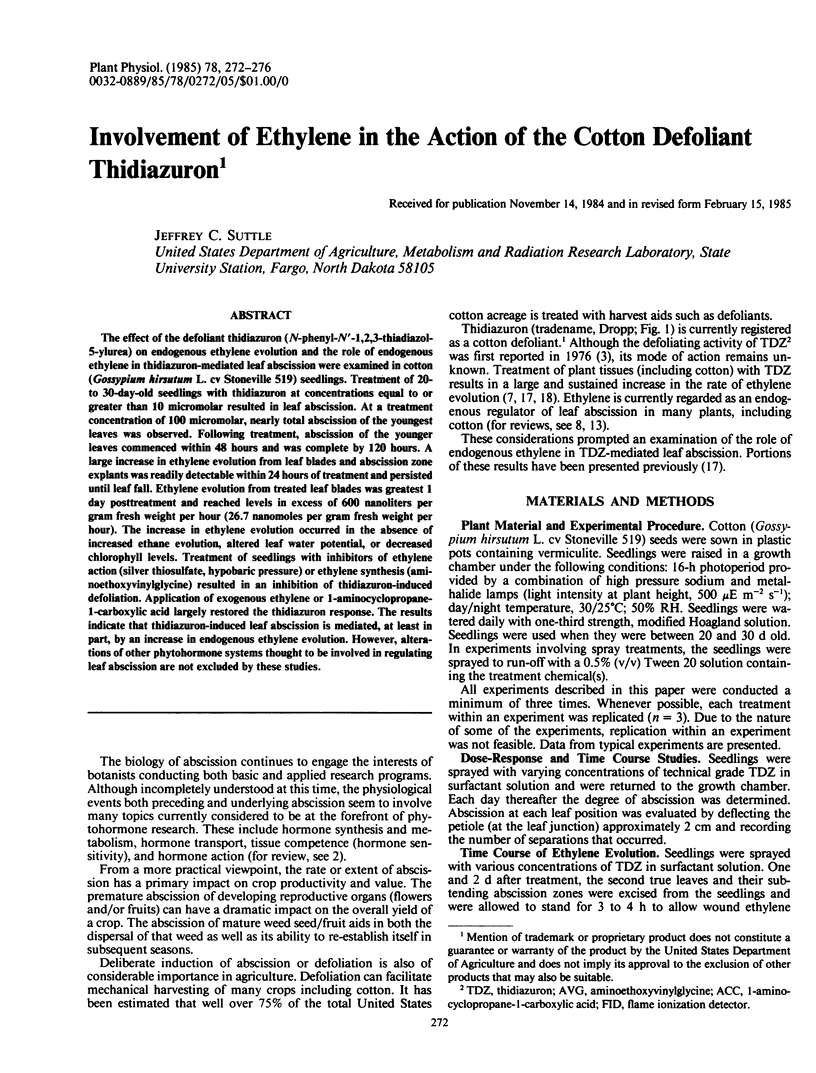
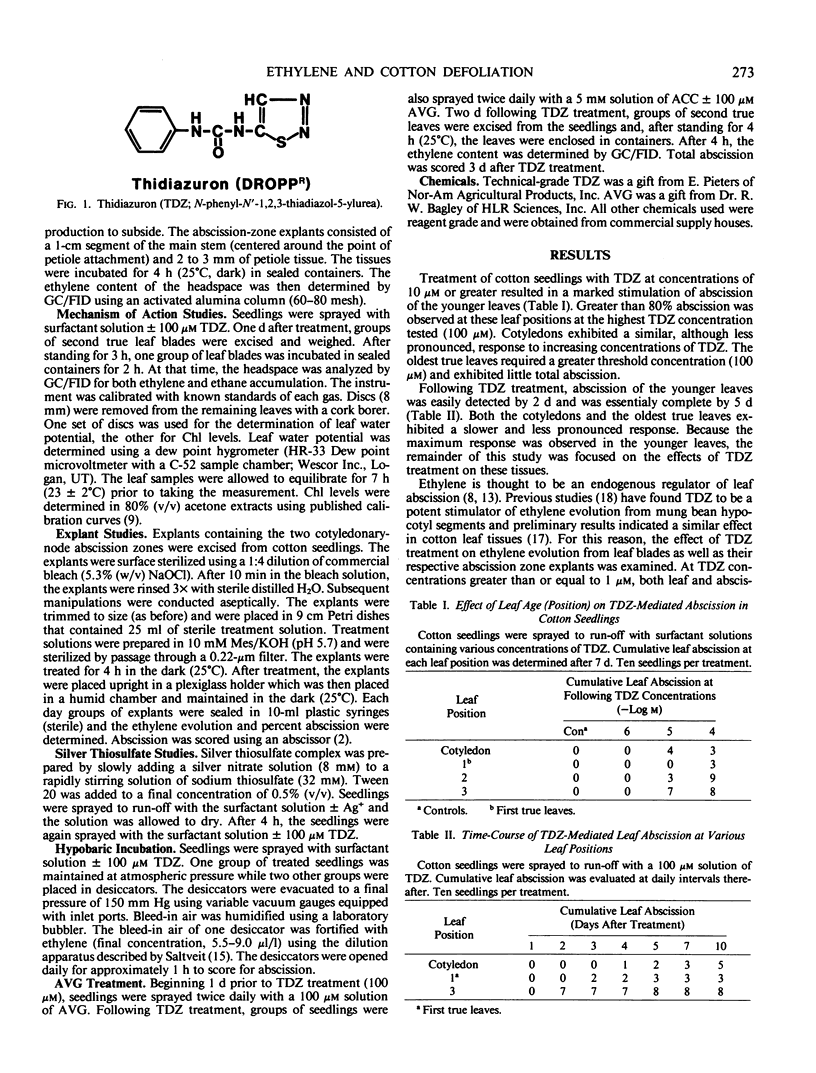
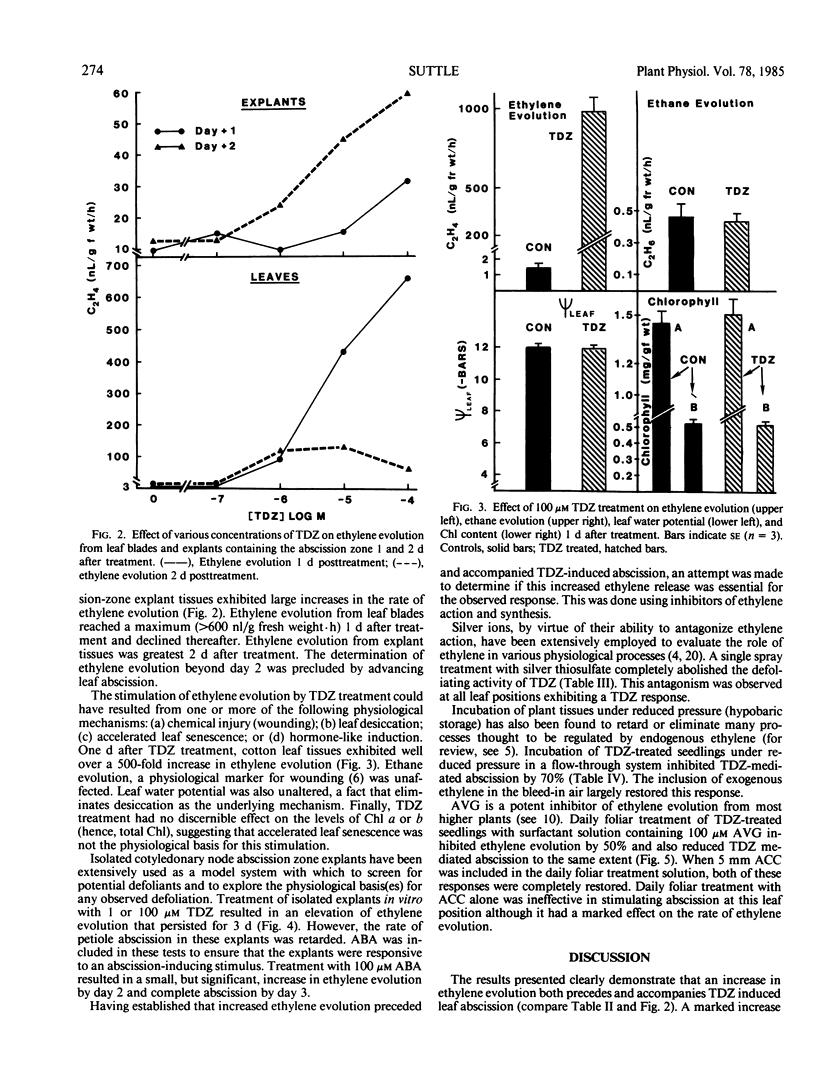
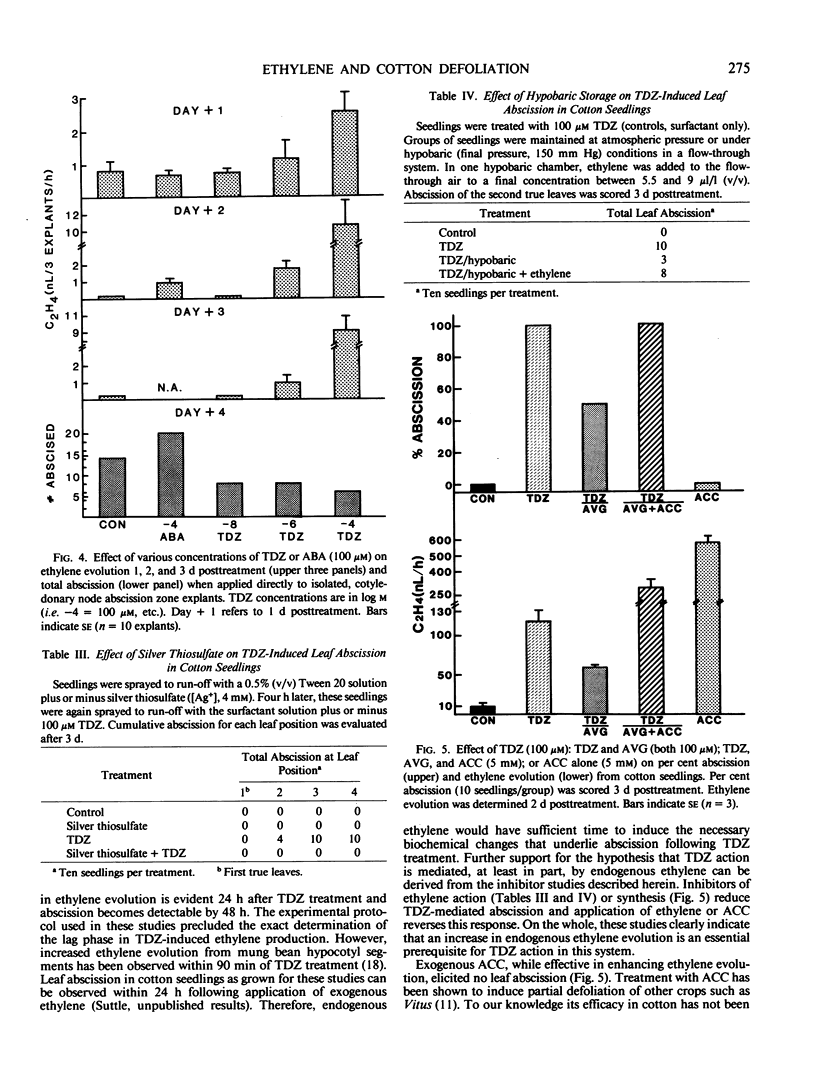
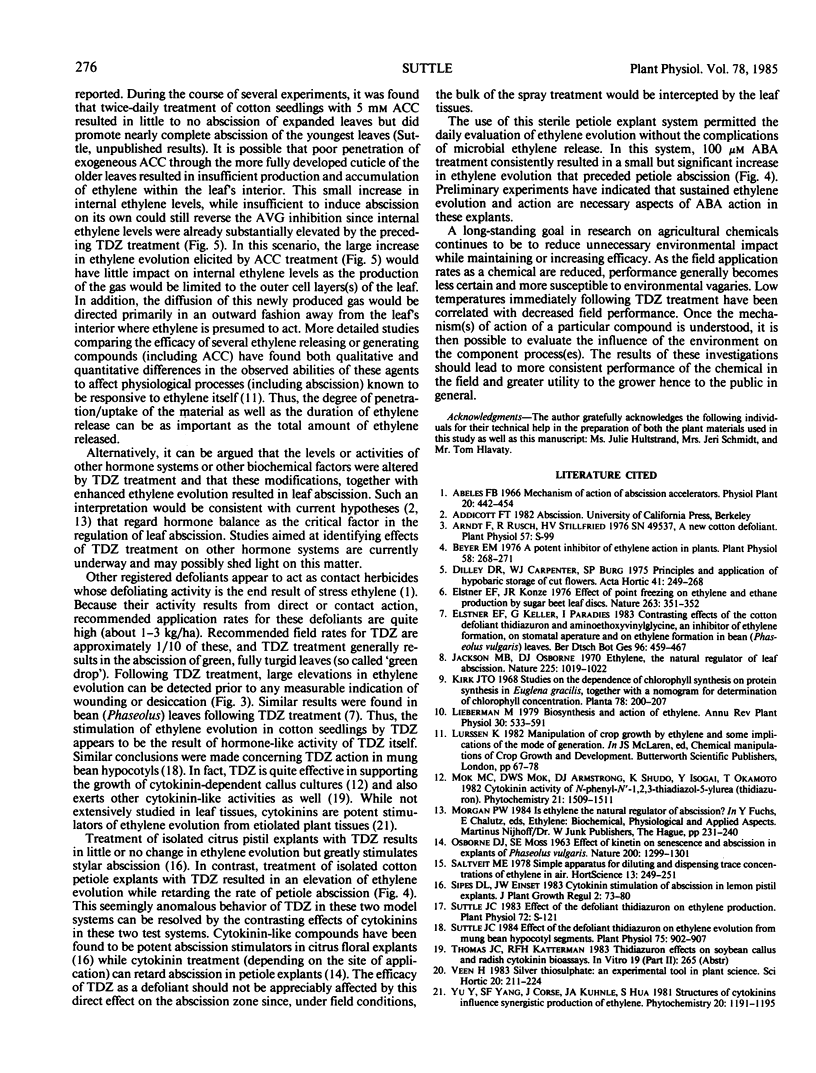
Selected References
These references are in PubMed. This may not be the complete list of references from this article.
- Beyer E. M. A potent inhibitor of ethylene action in plants. Plant Physiol. 1976 Sep;58(3):268–271. doi: 10.1104/pp.58.3.268. [DOI] [PMC free article] [PubMed] [Google Scholar]
- Jackson A. O., Larkins B. A. Influence of Ionic Strength, pH, and Chelation of Divalent Metals on Isolation of Polyribosomes from Tobacco Leaves. Plant Physiol. 1976 Jan;57(1):5–10. doi: 10.1104/pp.57.1.5. [DOI] [PMC free article] [PubMed] [Google Scholar]
- Jackson M. B., Osborne D. J. Ethylene, the natural regulator of leaf abscission. Nature. 1970 Mar 14;225(5237):1019–1022. doi: 10.1038/2251019a0. [DOI] [PubMed] [Google Scholar]


